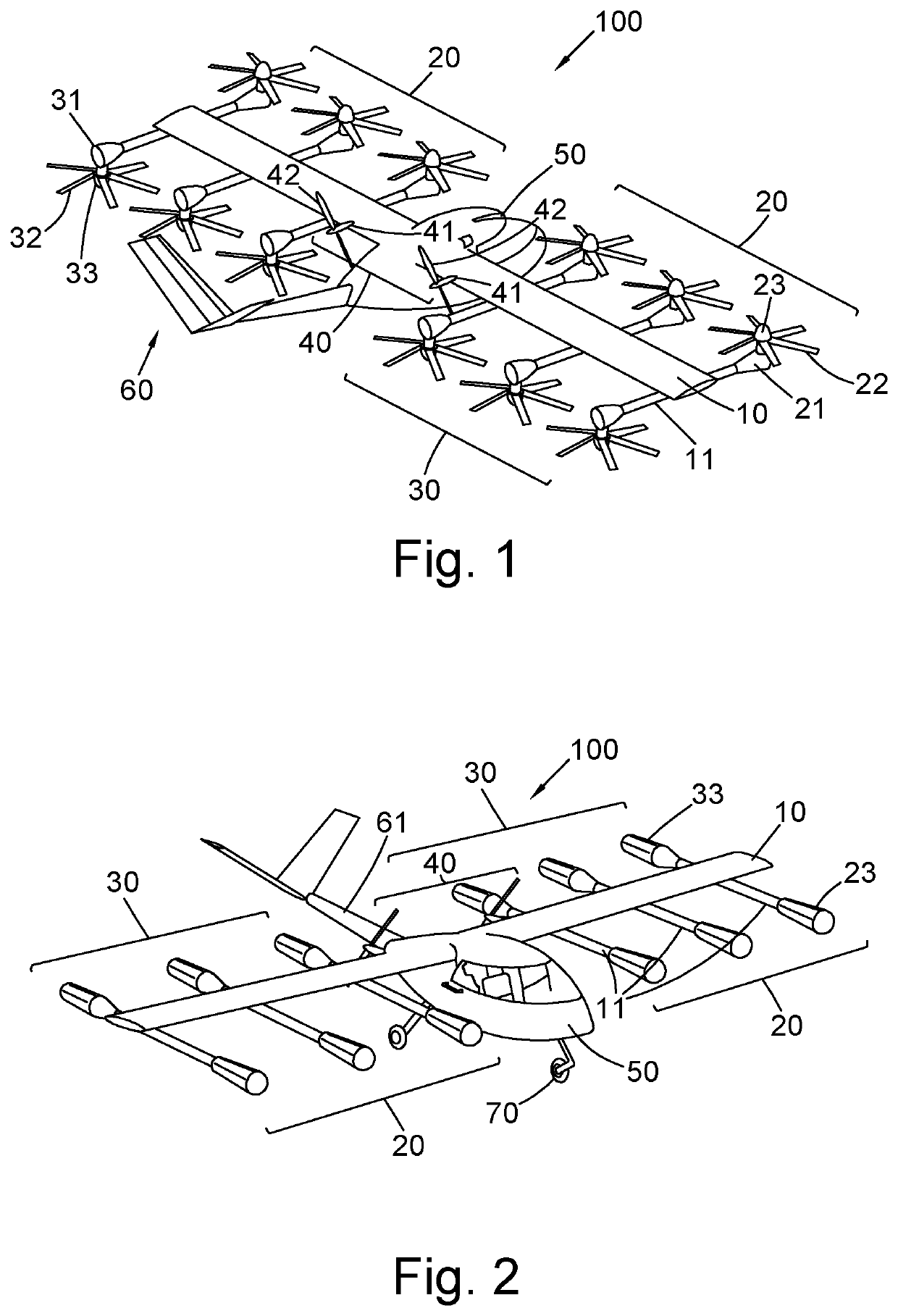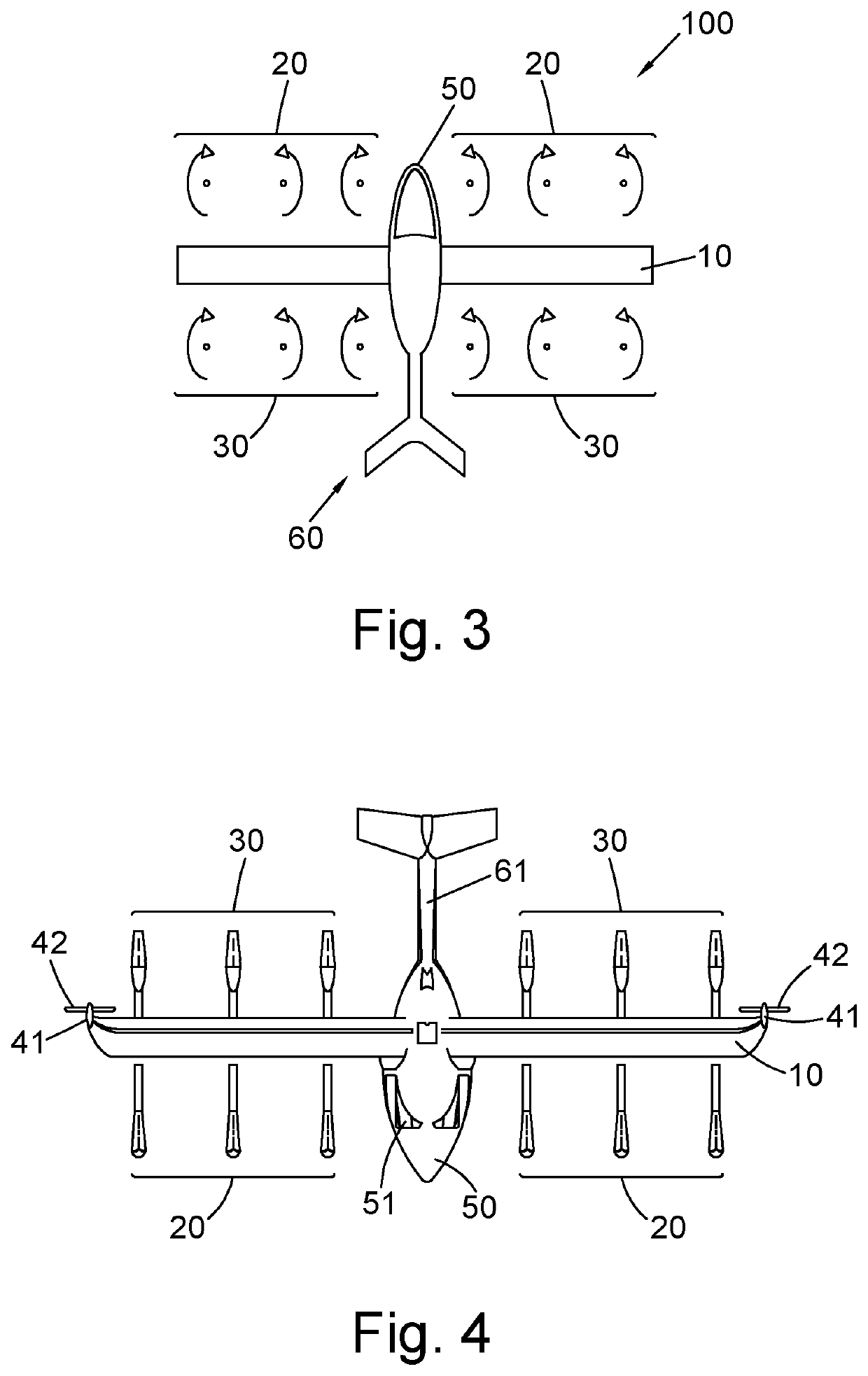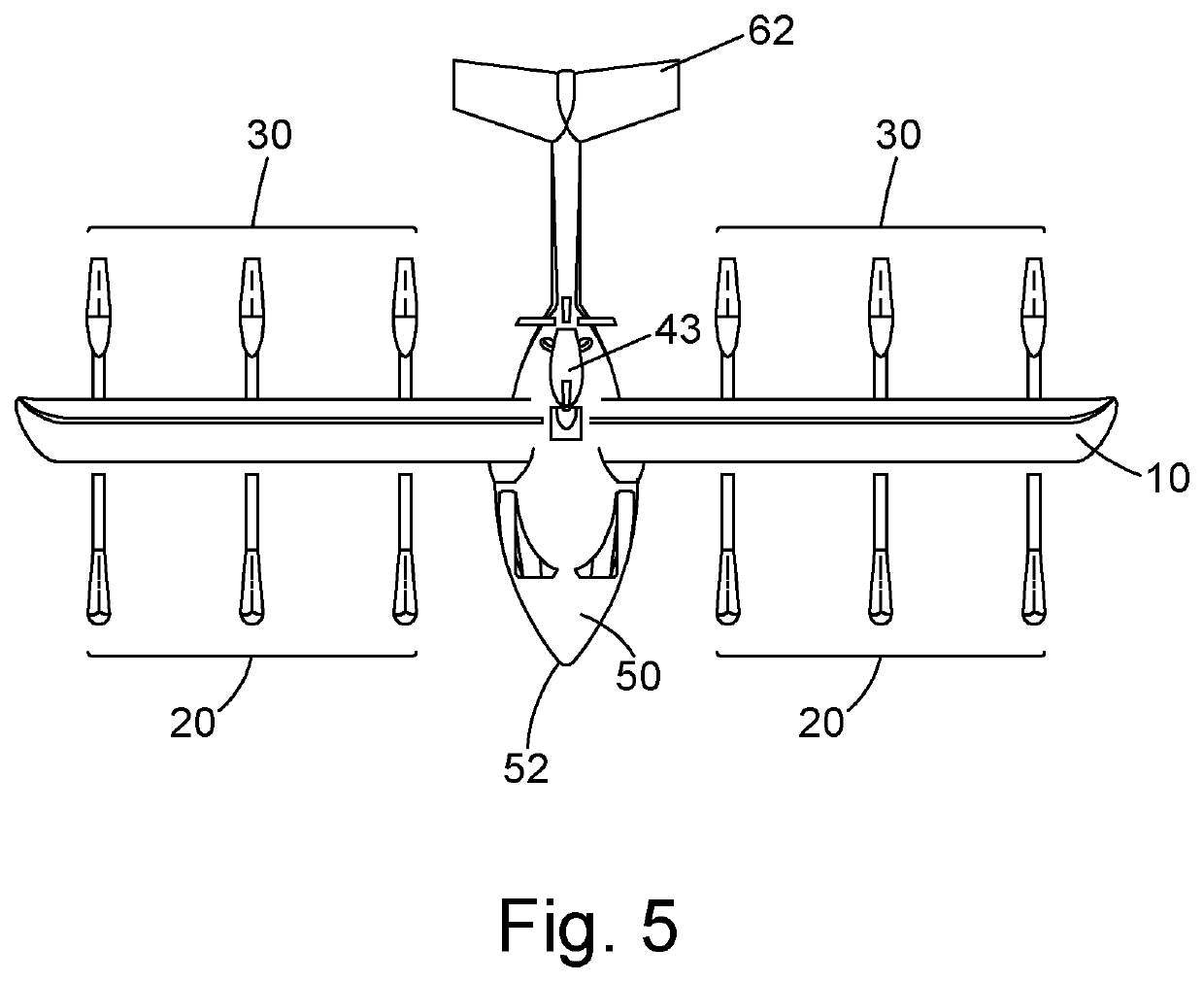Aircraft and Modular Propulsion Unit
a propulsion unit and modular technology, applied in the field of aircraft, can solve the problems of reducing the range and efficiency of the vehicle in horizontal (cruising) flight, osprey noise, and inconvenient use, and achieves the effect of simple and convenient way of steering/controlling the aircraft and inducing extra drag
- Summary
- Abstract
- Description
- Claims
- Application Information
AI Technical Summary
Benefits of technology
Problems solved by technology
Method used
Image
Examples
Embodiment Construction
[0097]FIG. 1 shows a back-side perspective view of an embodiment (100) of the aircraft of the invention. The aircraft has two wings (10) attached to a cockpit / passenger-carrier (50), and has a tail portion (60). The tail portion has an elongate tail boon (61) with V-shaped tail fins (62). The aircraft has a slender streamlined body aligned with the airflow.
[0098]Below each wing are three booms (11), on the end of the booms are mounted propulsion units, i.e. a tractor propeller (21) and a pusher propeller (31), each propeller having 6 foldable blades (22, 32). The blades are in the unfolded (open) configuration. The tractor propellers (21) are pointing upward and the pusher propellers (21) are pointing downward. On the trailing edge of the wings (10), close to the cockpit / passenger-carrier (50), there are two two-bladed pusher propellers (41). The tractor propellers (21) combine to form part of the TPM (20), the pusher propellers (31) combine to form part of the PPM (30), and the two...
PUM
 Login to View More
Login to View More Abstract
Description
Claims
Application Information
 Login to View More
Login to View More - R&D
- Intellectual Property
- Life Sciences
- Materials
- Tech Scout
- Unparalleled Data Quality
- Higher Quality Content
- 60% Fewer Hallucinations
Browse by: Latest US Patents, China's latest patents, Technical Efficacy Thesaurus, Application Domain, Technology Topic, Popular Technical Reports.
© 2025 PatSnap. All rights reserved.Legal|Privacy policy|Modern Slavery Act Transparency Statement|Sitemap|About US| Contact US: help@patsnap.com



